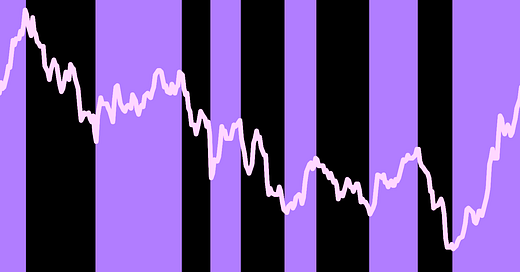Market predictions and trends shaping the equity landscape in Q1 2025

January 28, 2025
As we approach the first quarter of 2025, equity markets are facing a mix of optimism and caution. On the one hand, a strong recovery in global economies post-pandemic, combined with resilient corporate earnings, presents opportunities for investors. On the other hand, concerns about rising interest rates, inflationary pressures, and geopolitical risks continue to pose challenges.
In this Q1 Equity Market Outlook, we examine the key forces at play, from interest rate policies and inflation to sector-specific performance and broader economic indicators. Investors must balance these risks and opportunities as they craft their strategies for the upcoming quarter.
1. Global Economic Trends and Equity Market ImplicationsThe global economy is in a period of transition, as central banks continue to navigate the delicate balance between controlling inflation and fostering growth. Key considerations for the Q1 equity outlook include:
These global economic factors suggest that investors should expect a volatile and data-driven market in Q1 2025, with a focus on how central bank actions will impact corporate earnings and overall sentiment.
2. Key Sectors to Watch in Q1 2025While broader market conditions may influence equity performance, sector rotation will be a critical theme in the first quarter. Some sectors are poised to outperform, while others may face headwinds as interest rates and inflationary pressures continue.
Corporate earnings will be the primary driver of equity market performance in Q1 2025. Companies in sectors such as financials, healthcare, and consumer staples are expected to report solid earnings, while those in the consumer discretionary and technology sectors may face headwinds due to inflationary pressures and rising costs.
Key factors influencing earnings include:
Despite these challenges, earnings growth is expected to remain positive in Q1 2025, driven by strong demand in certain sectors and continued corporate innovation.
4. Investment Strategies for Q1 2025Given the uncertainties and opportunities outlined above, equity investors in Q1 will need to employ a well-diversified and flexible strategy. Key tactics to consider include:
As we move into Q1 2025, the equity market remains a balancing act between opportunity and risk. The key will be to remain nimble and data-driven, adjusting strategies based on evolving market conditions and economic indicators. Investors should continue to monitor:
In conclusion, while Q1 may bring volatility, there are numerous opportunities for those who focus on high-quality sectors, maintain diversification, and adjust to shifting economic and market dynamics.

Investing in Future Trends for Long-Term Growth
Thematic investing focuses on future trends shaping industries. Learn how to capitalize on tomorrow’s opportunities today

Markets React Positively as Election-Driven Optimism Grows
Stock markets are experiencing a strong post-election rally, driven by investor optimism, policy expectations, and economic growth prospects. Will the momentum continue

Annuities Provide Financial Stability and Retirement Security
Annuities offer retirees a reliable stream of lifetime income, protecting them from market volatility and ensuring long-term financial security

The bank repositions its operations, scaling back in Europe, UK, and the Americas.
HSBC is undertaking its largest investment banking retrenchment in decades, planning to exit its M&A and ECM operations in key Western markets. This restructuring focuses on shifting resources to Asia and the Middle East while consolidating debt capital markets and finance-led activities

Stock Market Trends, Economic Updates, and Investment Insights
This week, U.S. markets faced volatility amid earnings reports, Federal Reserve signals, and economic data releases. Investors analyze inflation trends and interest rate forecasts while navigating sector-specific shifts in technology, energy, and financial markets.

Value stocks remain underappreciated as investors focus on growth
Despite historical outperformance over the long term, value stocks remain underweight in many portfolios. With markets favoring growth and technology stocks, are investors overlooking key opportunities in undervalued assets

Stocks remain resilient despite rising interest rates—here’s why.
Higher interest rates often trigger fears of a market downturn, but historical data suggests otherwise. While some sectors face challenges, others thrive in a high-rate environment. Investors should focus on strategic allocation rather than panic selling

Market predictions and trends shaping the equity landscape in Q1 2025
The Q1 2025 equity market outlook explores key factors shaping investor sentiment and market direction, including global economic trends, corporate earnings, and sector rotations. Understanding these factors will be crucial for positioning portfolios in the coming months

Cyclical stocks and economic growth trends lead the market rally.
Economic resilience continues to support a robust cyclical rally, as key sectors benefit from sustained recovery. This outlook emphasizes growth in consumer demand, infrastructure, and industrials, driving cyclical stock performance
The Atlantic Daily
Get our guide to the day’s biggest news and ideas, delivered to your inbox every weekday and Sunday mornings. See more newsletters
.webp)
Ideas That Matter
Subscribe and support more than 160 years of independent journalism.
Subscribe